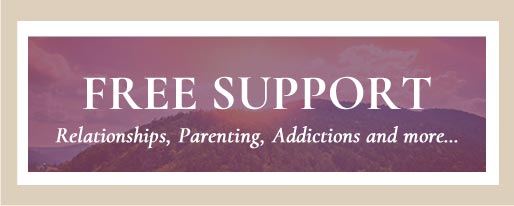Triggers: Acting Out or Acting In
By Dr. Margaret PaulAugust 24, 2020
What do you do when a person or situation triggers your stress response?
 Most of us have at one time or another been 'triggered.' A trigger is an event, situation or interaction with a person or group of people that activates the fight, flight or freeze stress response. A trigger is usually related to a past event, interaction or situation that was very painful or traumatic
Most of us have at one time or another been 'triggered.' A trigger is an event, situation or interaction with a person or group of people that activates the fight, flight or freeze stress response. A trigger is usually related to a past event, interaction or situation that was very painful or traumatic
One of the eventual results of practicing Inner Bonding is that, over time, we develop a strong loving adult self - capable of being aware of when we are triggered, rather than acting unconsciously in response to a trigger. Our consciousness of when we are triggered gives us the choice to act in rather than act out.
Acting Out
When we act out in response to a trigger, we do what we naturally do when the stress response is activated: we get angry, blaming, agitated, impatient, annoyed or irritated, or we shut down, withdraw, numb out, go away or disassociate. These are the natural actions of the wounded self during a threat to survival.
Acting out often creates even more trauma. For example, if your usual stress response is to get angry, another person may also get angry. You might each say things that are very hurtful. If your usual response is to shut down and withdraw, you might end up feeling alone and depressed.
When you are in real and present danger, the fight, flight, or freeze response is vitally important; however, it is not a healthy response when you are triggered, and not in actual danger.
Acting In
Acting in is very helpful to you when you are triggered by a situation that is not actually dangerous to you, but is bringing up strong emotions that are associated with an old, unresolved ’danger.’ Acting in means that you utilize the trigger to go inside with an intent to learn about the intense feeling. The feeling that is triggered might be anger, agitation, fear, terror, anxiety, numbness, loneliness, heartbreak, grief, helplessness over another, disorientation, emptiness, aloneness, or physical pain somewhere in your body. These feelings are telling you that something inside needs to be attended to.
Attend to the feelings by putting your hands on your heart, breathing into the painful feelings, opening to your guidance, and bringing compassion to your feelings. Reassure your inner child that he or she is not alone with these feelings, that you and your guidance are here right now. Then move into an intent to learn about what the feelings are telling you.
When you have practiced Inner Bonding long enough to have a strong and present loving adult, then you might have the consciousness to act in, rather than automatically act out from your wounded self.
It's not easy to have this much consciousness.
Most of us get triggered so fast that before we know it we are acting out with a fight, flight or freeze response. It takes lots of practice to not go on automatic pilot. Yet this is what our inner child needs in order to feel safe when we are being triggered by a person or a situation. When we go into an automatic stress response when there is no real and present danger, we often re-traumatize our inner child. When there is no loving adult to manage the situation, we re-create the original trauma by abandoning ourselves, which only serves to create more fear.
Developing our conscious loving adult is neither easy nor fast. It happens over time as we consistently practice Inner Bonding throughout each day. When you can act in, with compassion for your feelings and an intent to learn in response to minor triggers, such as feelings of annoyance or irritation, then it becomes easier to remember to act in when facing more challenging triggers.
Don't give up. No matter how many times you forget (after 36 years of practicing Inner Bonding I still sometimes forget and go on automatic pilot), you can still keep learning, even AFTER you have forgotten. As compassionately as you can, open to learning with your guidance about what you wish you had done instead of acting out. Rehearse the action you come up with, so that maybe next time you will remember.
Join Dr. Margaret Paul for her 30-Day at-home Course: "Love Yourself: An Inner Bonding Experience to Heal Anxiety, Depression, Shame, Addictions and Relationships."
Join IBVillage to connect with others and receive compassionate help and support for learning to love yourself.
Image by david-moum on unsplash
 Send this article to a friend
Send this article to a friend  Print this article
Print this article  Bookmarked 0 time(s)
Bookmarked 0 time(s)
| Related Articles |
|---|
| The Terror that Triggers Protective Behaviors |
| How to Move Out of Your Ego Wounded Self |
Comments
| Author | Comment | Date |
|---|---|---|
| Join the Inner Bonding Community to add your comment to articles and see the comments of others... | ||

Daily Inspiration
Do you attach your value to effort or to outcome? When you attach your self-worth to outcome, then you are likely afraid of failure. When you attach your self-worth to effort, then you likely don't even think much about failure, and you see failure as just part of your learning experience. Why not let go of attaching your worth to outcomes and instead focus on the process?
By Dr. Margaret Paul

 Share with Del.icio.us
Share with Del.icio.us Share with Digg
Share with Digg







